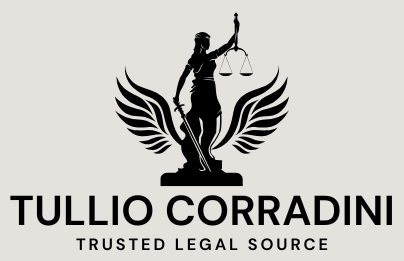The Ninth Circuit lately dealt with the problem of no matter whether get-togethers can contractually concur to shorten the statute of limits period of time for bringing a copyright infringement declare. In an unpublished viewpoint in the scenario, Evox Productions, LLC v. Chrome Information Methods, LP (submitted Feb. 10, 2023), the Ninth Circuit held that the trial courtroom experienced properly enforced contractual provisions to come across that the Plaintiff’s copyright infringement promises had been barred by the agreed-to shortened, statute of limitations interval.
Evox Productions makes and licenses visuals of automobiles. In 2003, it licensed its visuals to Chrome Information Answers, LP, for a five-12 months interval. Chrome, pursuant to that arrangement, sublicensed the visuals to 3rd events. Thereafter, in 2016, Evox sued Chrome for contributory and/or vicarious copyright infringement, alleging that 3 of Chrome’s sublicensees, iPublishers, Potratz, and Webnet, infringed on Evox’s copyright by exhibiting the visuals following Evox’s license agreement with Chrome expired.
The license agreement in between Evox and Chrome contained a provision that “[n]o action, irrespective of variety, arising out of this arrangement may well be introduced by either celebration far more than two a long time just after the result in of motion arose.” Typically, the statute of constraints for a copyright violation is three a long time. Supplied the contractual provision, the demo courtroom uncovered that it precluded Evox from bringing any copyright infringement claim for infringement that occurred prior to January 14, 2014, two a long time ahead of it filed its complaint.
The Ninth Circuit acknowledged that California courts will honor an agreement to shorten the statute of constraints period of time “provided it is reasonable.” The Ninth Circuit mentioned that, whilst there was a line of more mature California circumstances that held that these kinds of agreements were being disfavored, more new situations experienced rejected this solution. Also, the Ninth Circuit located that less than California legislation, a two-year statute of limits is regarded as reasonable.
Evox experimented with to argue that the functions did not intend for this contractual provision to use to copyright infringement statements. The Ninth Circuit turned down this argument, discovering that for the reason that the claims from Chrome have been for copyright violations arising out of the licensing arrangement, “this copyright dispute `arises out of’ the license arrangement,” and consequently, a shortened statute of limitations period of time would implement.
Evox also tried out to argue that since the license arrangement with Chrome experienced expired yrs before, the provision shortening the statute of constraints period no for a longer time utilized. The Ninth Circuit likewise turned down this argument and located that the limitations provision, as with other obligations below the license arrangement, had “already [been] fixed under the contract.”
The Ninth Circuit continued by holding that the trial courtroom effectively found that Evox experienced unsuccessful to present sufficient evidence that the 3 sublicensees had dedicated functions of infringement for the duration of the shortened limitations period. The Ninth Circuit mentioned that less than the Copyright Act, “the operator of a copyright had the exclusive ideal to exhibit its perform publicly.” Additionally, a assert for copyright infringement arising out of a general public exhibit “does not require evidence that the safeguarded do the job was essentially seen by any individual. Instead, the [Copyright] Act defines `publicly’ to basically need that the display is at ‘a location open up to the public’… quickly encompassing any publicly available server.” As a result, the Ninth Circuit concluded that Evox would only have to clearly show that the safeguarded will work were being saved on a “publicly accessible server” through the restrictions period to demonstrate evidence of infringement.
With respect to the sublicensee Potratz, the Ninth Circuit observed that the e-mail and declarations available by Evox have been not ample. Although some of the evidence may possibly have shown that Potratz had access to Evox’s copyrighted photographs right up until April 2014, there was no evidence that Potratz had really exhibited or stored these photographs on a “publicly accessible server.”
Similarly, with regard to the sublicensee iPublishers, Evox available comparable proof of email messages concerning Chrome and iPublishers that instructed that iPublishers experienced obtain to Evox illustrations or photos right up until mid-2014. When all over again, the Ninth Circuit located that this only confirmed that iPublishers had entry to the copyrighted photographs, not that it experienced publicly exhibited them in violation of the Copyright Act.
With regard to visuals that the sublicensee Webnet had accessible on a publicly obtainable server, the Ninth Circuit ruled that the demo court docket appropriately uncovered that Evox experienced granted “an implied sublicense to use its visuals until finally November 2014” to Webnet. Although there was no evidence of an express settlement of these a sublicense, the court docket agreed that Evox had granted “an implied license by not objecting to [Chrome’s] experiences of its lively sublicensees in accepting royalty payments for people sublicenses.” The Ninth Circuit continued by noting that grants of a nonexclusive copyright license did not have to be in writing but that they could “be implied from perform.” Moreover, the Ninth Circuit reasoned that “[c]onsent presented in the type of mere permission or deficiency of objection is also equivalent to a nonexclusive license and is not needed to be in writing.” The Ninth Circuit agreed with the demo court docket that since Evox approved royalties for the Webnet sublicense right up until November 2014 and never ever objected to its ongoing display screen of Evox’s photos, Evox experienced impliedly granted a license to Webnet to use its photographs until finally November 2014.
Last but not least, even to the extent there could be proof that Webnet experienced displayed the visuals following November 2014, the Ninth Circuit held that the district court thoroughly uncovered that there was no secondary infringement that would topic Chrome to liability. The Ninth Circuit agreed that “there is no evidence that [Chrome] realized of, induced or inspired Webnet’s purported immediate copyright infringement throughout the appropriate time period.” Thus, the Ninth Circuit affirmed the grant of summary judgment to Chrome.
The Evox situation is a reminder to functions negotiating license agreements, as perfectly as other agreements involving mental property that the functions can contractually agree to shorten the limits interval for bringing any statements arising out of the agreement, together with claims for copyright infringement. If a copyright holder wants to exclude statements for copyright infringement from these a provision, it demands to make it apparent in the agreement that a shortened constraints time period does not apply to claims of copyright infringement.











More Stories
California Proposition Regarding App-Based Drivers is Largely Here to Stay (For Now)
Court of Appeal: Privette Doctrine Does Not Apply to Landlord-Tenant Relationships | California Construction Law Blog
USDA Proposes New “Made in the USA” Standard